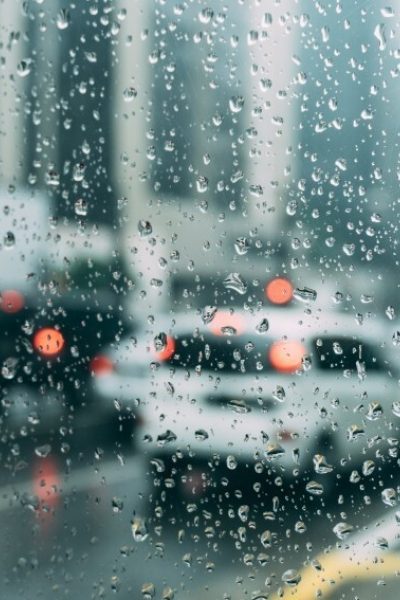
How to drive in heavy rain
- Share via X
- Share via Facebook
- Share via Pinterest
- Share via LinkedIn
-
Copy to your clipboard
Driving in the rain can be dangerous. Visibility decreases and wet roads can lead to aquaplaning. Follow this advice so you can remain as safe as possible when driving in the rain.
Advice for Driving in the Rain
First of all, consider if your journey is essential. If the weather is treacherous, avoid driving if you can. But if your journey is essential, you’ll need to be prepared in advance.
How to Prepare for Driving in the Rain
In order to be prepared in bad weather and rainy conditions, first and foremost you will need to ensure you keep an eye on your car’s maintenance before the bad weather hits.
Vital maintenance that will keep you safe on the roads includes:
- Windscreen wipers – ensure your windscreen wipers are in good working order. In poor weather, you need to have the best visibility possible. You won’t have that if your windscreen wiper rubber has disintegrated and they judder along instead of smoothly wiping the water away. You can check your wipers by running your fingers along the rubber blade. If the rubber feels brittle or is starting to break up, get them changed.
- Screen wash – do you have enough in your tank? Adverse weather can cause all kinds of debris to land on your windscreen, and without the screen wash, you won’t be able to get rid of it and see clearly. It’s inexpensive and easy to fill up, so don’t be caught short on this one.
- Lights – if one of your headlights or taillights is out, not only will it reduce your visibility, but other road users will also be less able to see you. In heavy rain, you need to be seen by other drivers. Headlights are vital while driving in the rain: even if you think your visibility is fine, having your lights on helps other drivers and road users see you as well. You can check your lights by turning them on when parked, and walking around your car. Just make sure you leave the car in neutral with the handbrake on!
- Tyres – driving on wet roads increases stopping distances and at worst, risks aquaplaning. That’s why it’s vital that your tyres are roadworthy and at the correct tyre pressure. Check tyre treads simply with a 20p coin – if the inner rim of the coin is visible you will need to change your tyres immediately. In the winter months when we’re more likely to see heavy rain, you should consider changing to winter tyres, which are more adept at handling wet conditions.
How to Drive Safely in the Rain
- Leave more space between you and the car in front – according to the Highway Code, stopping distances on wet roads are at least double the stopping distances on dry roads. For this reason, you need to make sure the distance between you and car in front is greater than it would be normally.
- Slow down – reducing your speed will also help reduce your stopping distance. This will also reduce the risk of aquaplaning, giving your tyres more time to disperse the water and gain traction on the road.
- Use your dipped headlights – this will help improve your visibility and also ensures other road users can see you clearly.
- Avoid puddles and standing water – standing water increases the chances of aquaplaning, so where possible avoid driving straight through puddles and standing water
- Follow the drier tracks of cars in front – drier tracks means less water for your tyres to deal with, but always remember to keep a safe distance
- Avoid fallen leaves – if there is a build-up of fallen leaves in the autumn or winter, these can be just as dangerous as standing water.
- Keep your air-con on – rainy weather can cause condensation to build up on your windscreen, so by keeping your air-con on aimed at the windscreen, you won’t lose any visibility this way. You can keep your air-con in good condition with an air-con service or recharge at your local HiQ Centre.
- Don’t use your fog lights – this could dazzle other road users and may also mask your brake lights.
- Use winter tyres - winter tyres are designed to cope with wintry conditions such as increased rainfall. Winter tyres have sipes, which drastically increase the amount of water they can disperse from underneath the tyre
- Turn off cruise control – if you’re driving in the rain, you need to slow down so it is advised to turn off your cruise control and reduce your speed